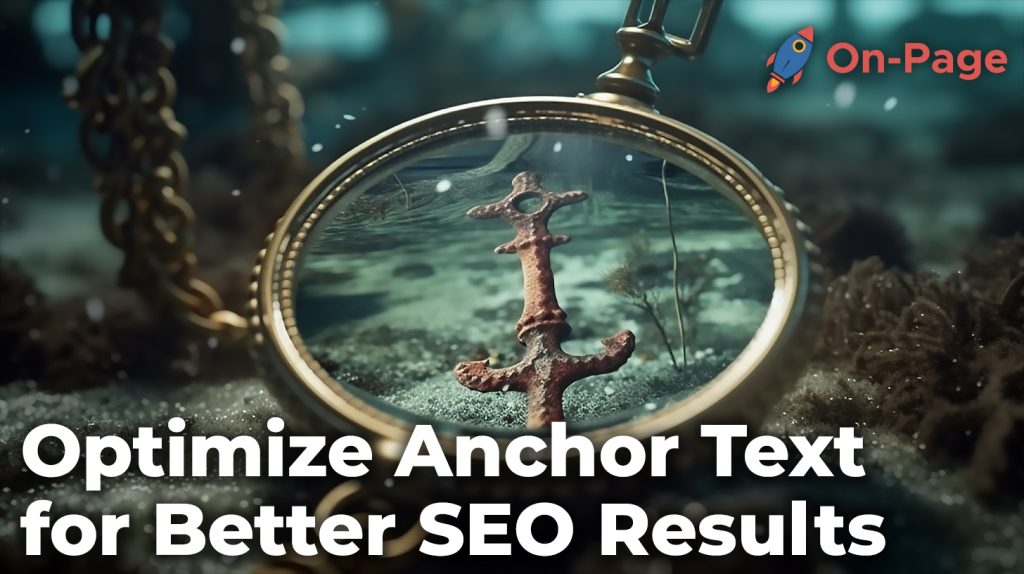
Imagine this: You’ve spent countless hours crafting a magnificent website with top-notch content, yet your site’s search engine rankings remain stagnant. You’re confident in your keyword strategy and your sitemap is well-structured. So, you wonder what might be the missing piece to skyrocket your online visibility? The answer lies beneath the surface – it’s time to optimize your anchor text for SEO! In this blog post, together with On-Page.ai explore effective techniques to make the most of anchor text, unlocking the door to higher search engine rankings and better SEO results. Get ready for Google to love you even more!
To optimize your anchor text for better SEO, it is important to choose descriptive, relevant keywords or phrases for your links and avoid generic or overly keyword-heavy text. It is also recommended to vary the anchor text across your website and keep it natural and intuitive for users. Using tools like Moz Pro can help identify areas where you can improve your anchor text strategy.
Understanding Anchor Text in SEO
Anchor text is the visible clickable text that appears as a hyperlink on a website. In short, it represents the words that are used as a link to another page or website. As search engines try to understand the user’s intent when they type in a search query, anchor text provides contextual information about the linked-to content.
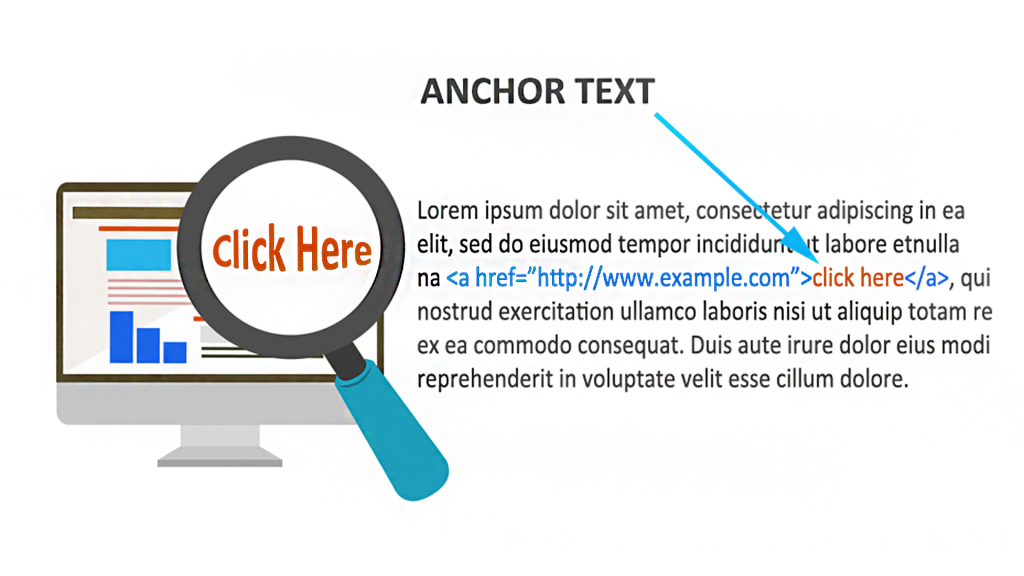
Anchors can be an important factor in deciding how relevant your web page is to search engine queries. The use of appropriate anchor text reinforces the relevance of both the linking and linked pages, and can boost the visibility of your site on search engine rankings.
For instance, suppose you are reading a blog post about “How to Optimize Anchor Text for Better SEO Results” and there is a hyperlink within the sentence “Using diverse anchor text with different relevant keywords or phrases can help optimize your anchor text.” Here, “diverse anchor text with different relevant keywords or phrases” is the anchor text.
Knowing what constitutes good and bad anchor text will help you make informed decisions when creating links to your own website.
- Anchor text is the visible clickable text that appears as a hyperlink on a website, providing contextual information about linked-to content. Using appropriate anchor text reinforces the relevance of both the linking and linked pages and can boost the visibility of your site on search engine rankings. By understanding what constitutes good and bad anchor text, you can make informed decisions when creating links to your own website.
Types of Anchor Text
There are several types of anchor text that websites use. Some types are more effective than others when it comes to SEO optimization:
1. Exact-match: This type of anchor text uses exact keyword matches on both the linked and destination pages. While it can be useful for boosting relevance, overuse can appear spammy and negatively impact ranking.
2. Partial-match: This type of anchor text includes variations on exact match keywords but not necessarily all of them. It gives search engines context about the linked-to content without appearing overly optimized.
3. Branded: A branded anchor uses the company name or URL being linked instead of a keyword phrase. It imparts brand awareness while providing crucial context regarding what users might expect from clicking through.
4. Naked link: A naked link includes the raw URL for the linked page. It’s a clean and simple way to link without the need for anchor text, but it offers minimal context.
5. Generic: Generic anchor text like “Click here” doesn’t provide much information about what users can expect on the other side of the link. These types of links are not very useful for SEO as they offer no relevant context to the search engine bots.
6. Images: Image alt text can work as an anchor text if the image is used for a hyperlink. Alt-text is important for accessibility enabling screen readers to understand images but also adds relevancy to the linked webpage.
While exact-match anchors have been traditionally considered most effective, there is debate about their effectiveness in modern SEO. Many SEO experts recommend a balance between different types of anchors, to avoid keyword overuse that can make your content appear spammy.
Consider this analogy – In college basketball, trying to score by hitting nothing but three-pointers won’t often work; similarly while using only one type of anchor text might not be that beneficial in SEO world. On the other hand, identifying which type of anchor would work best for different situations will help improve your website’s relevance and credibility in search engine rankings.
Examining more about how different types of anchor texts carry their own weight while focusing on using them correctly will help you understand how best to create optimized anchor texts on your site.
- According to a study conducted by Ahrefs, the correlation between keyword-rich anchor text and higher search engine rankings is approximately 0.25. This suggests that having relevant keywords in your anchor text can contribute to better search engine rankings.
- Moz research indicates that websites with diverse and natural-looking anchor text distributions are more likely to rank well on search engines. This means that using a variety of different types of anchor text, such as branded, partial-match, and related keywords, can improve SEO performance.
- Google’s Penguin update, introduced in 2012, has impacted around 3.1% of all English-language queries. The primary aim of this algorithm update was to penalize websites that participated in manipulative link-building practices, including over-optimization of anchor text. Therefore, avoiding spammy and overused exact-match anchor texts is vital for maintaining favorable search engine rankings.
Importance of Anchor Text for SEO
Anchor text is crucial for SEO because it helps search engines understand the context and relevance of the linked page. The external anchor text (the text used by other sites to link to your site) is considered as a factor in search engine algorithms that determine your website’s ranking. Relevant, descriptive anchor text can improve your website’s rankings on Google and enhance user experience.
For instance, let’s say you have a blog post about “Best coffee shops in New York City” and someone links to your post using the phrase “click here”. This would not provide any information about the content of your page. On the other hand, if someone links to your post using the anchor text “best coffee shops in New York City”, search engines can easily understand what your page is about and rank it higher for that particular keyword.
Furthermore, if multiple webpages use similar anchor texts while linking to your page, it will help establish the authority of your content for that keyword or topic. For example, if multiple websites link to your post using the exact same anchor text “best coffee shops in New York City”, it signals to search engines that multiple sources trust and recommend your page for that topic.
While effective use of anchor text is important for SEO, overusing exact-match or commercial anchor texts can also be viewed as spammy by search engines. It can negatively affect your rankings. Therefore, it is essential to create a balance between optimizing your anchors and making them relevant and natural for users.
Now that we’ve understood why anchor text is important for SEO, let’s dive into how we can create SEO-friendly anchor texts.
Creating SEO-Friendly Anchor Text
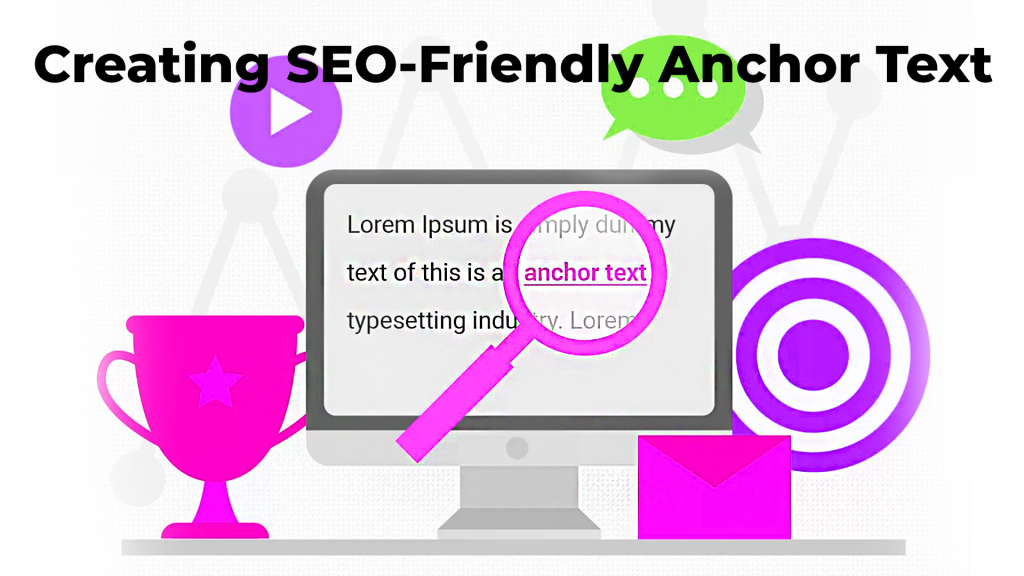
Creating SEO-friendly anchor text involves balancing keywords with relevance, avoiding over-optimization, and following best practices for link building.
To optimize anchor text, it is essential to balance relevance and keywords. Use descriptive, natural-sounding phrases that accurately reflect the target content. For instance, instead of using a commercial anchor like “buy now,” opt for more relevant anchors such as “check out this product” or “learn more about our services.”
While using partial-match keywords in anchor text is recommended by Google’s guidelines, overusing exact-match or commercial anchors can harm your website’s ranking. Instead of focusing solely on keywords in the anchor text, prioritize providing a useful user experience that helps search engines and users understand the content of the linked page.
However, there are arguments against SEO-centric anchor texts. Some SEO professionals advocate for more generic anchor texts like “click here.” They argue that using long-tail keyword phrases may not rank as well or be understandable to human users. Despite some merit to this claim, it is still essential to balance relevance and keyword optimization to create effective anchor texts.
Next up, we’ll discuss further ways to optimize your anchors and avoid over-optimization when creating SEO-friendly texts.
Balancing Keywords and Relevance
When it comes to anchor text optimization, striking the right balance between including keywords and maintaining relevance is key. Many website owners make the mistake of using exact-match or partial-match anchor text excessively in an attempt to rank higher for their target keywords. However, search engines have become smarter in recent years and overly optimizing anchor text can result in penalties.
- To create SEO-friendly anchor text that is both informative and relevant, it is important to consider the context of the link as well as the page being linked to. Anchor text should be descriptive enough to provide the user with a clear idea of what to expect when they click on the link. This helps improve user experience and reduces bounce rates.
- For instance, if you are linking to a blog post about the best coffee shops in Seattle, using “coffee shops in Seattle” as your anchor text may seem like a good idea. However, this type of anchor text lacks descriptive information and could lead users to question whether or not clicking on the link is worth their time. A better option would be something like “10 Must-Visit Coffee Shops in Seattle”. This provides users with a clear description of what they can expect from clicking on the link.
- In addition to providing useful information for users, anchor text should also include relevant keywords that help search engines understand the context of the link. It is important to choose relevant keywords that accurately describe the content being linked to without overloading them with too many keywords.
- Think about anchor text like a signpost – it helps guide users towards their destination by providing clear instructions about where they are headed. If a signpost gives unclear directions or leads someone in the wrong direction entirely, it can leave that person feeling frustrated and lost. Similarly, improperly optimized anchor text can confuse users and lead them down paths they don’t want to go.
A study conducted by Moz found that over-optimized anchor text was one of the top ten reasons for Google penalties. This shows just how important it is to find the right balance between keywords and relevance when optimizing your anchor text.
Now that we have explored how to balance keywords and relevance, let’s delve into the dangers of over-optimization in the following section.
Avoiding Over-Optimization
While it is important to include relevant keywords in your anchor text, it is equally important to avoid over-optimizing. Google’s algorithm has become increasingly sophisticated in recent years and can now detect patterns of over-optimization on websites. This leads to penalties that can negatively impact a website’s rankings.

For example, using exact-match or partial-match anchor text repeatedly in a page’s content, footer or blogroll can appear unnatural and spammy to search engines and users alike. Think about it – if every link on a page has the exact same anchor text, it raises suspicions about whether the links are being manipulated for SEO purposes.
On the other hand, some SEO experts argue that a certain degree of over-optimization is necessary to rank high in competitive niches. They believe that using exact-match or partial-match anchor text frequently is the only way to compete with bigger brands and established websites.
Ultimately, both arguments have merit – while using relevant keywords in your anchor text helps communicate the content of your linked pages to search engines, overusing keywords may raise red flags and result in penalties. The trick is finding the delicate balance between optimization and natural language.
Think of over-optimization like putting too much spice in a dish – too little and it might be bland, but too much and it becomes unpalatable. Similarly, excessive use of optimized anchor text can give your website an artificial flavor that will turn users and search engines off.
Now that we have discussed the dangers of over-optimization, let’s explore how to avoid it while still optimizing anchor text for SEO.
Analyzing Anchor Text for Optimization

Analyzing your website’s anchor text is the key to understanding how it impacts your search engine rankings. It can also help in identifying areas for improvement and focusing on effective SEO strategies that will work best for your site.
Analyze Anchor Text by Distribution
One way to analyze anchor text is by looking at the distribution of different types of anchors used across your site. This will help you understand if there are any imbalances or over-optimization in the use of certain types of anchors.
For instance, if you notice that most of your internal links use exact-match keyword anchor text, this could indicate overuse and lack of diversity in your linking strategy. On the other hand, if you see a healthy mix of branded, partial-match keywords, and descriptive anchor texts, this indicates a well-rounded approach to link building.
Analyze Anchor Text by Evaluating Relevance
Another way to analyze anchor text is by evaluating the relevance and context of linked pages. This means assessing whether the linked page’s content aligns with the keywords or phrases used in the anchor text. Google considers this a fundamental aspect of link quality and may penalize sites with irrelevant or spammy links.
Therefore, it’s crucial to ensure that your anchor texts are meaningful and relevant to their linked URLs. By doing this, you improve user experience and reduce bounce rates since users are more likely to click on relevant links leading to valuable content.
Analyze Anchor Text by Identifying Anchor Patterns
Lastly, analyzing anchor text can also help identify anchor patterns from external sources linking back to your website. This information is useful because it informs you about how other websites view your site content, as well as how authoritative and trustworthy they consider it to be.
However, it’s worth noting that you cannot control how other sites link back to yours. Nevertheless, keeping tabs on these links helps identify potential low-quality links that could hurt your ranking rather than helping it.
Using SEO Tools to Assess Anchor Text
SEO tools are essential resources when it comes to analyzing anchor text. They provide comprehensive data about your site’s linking profile and help identify areas for improvement.
One useful tool is Moz Pro, which offers features such as Link Explorer and Open Site Explorer. These tools help analyze anchor text distribution and assess link quality, providing insights into the relevance of linked pages and domains.
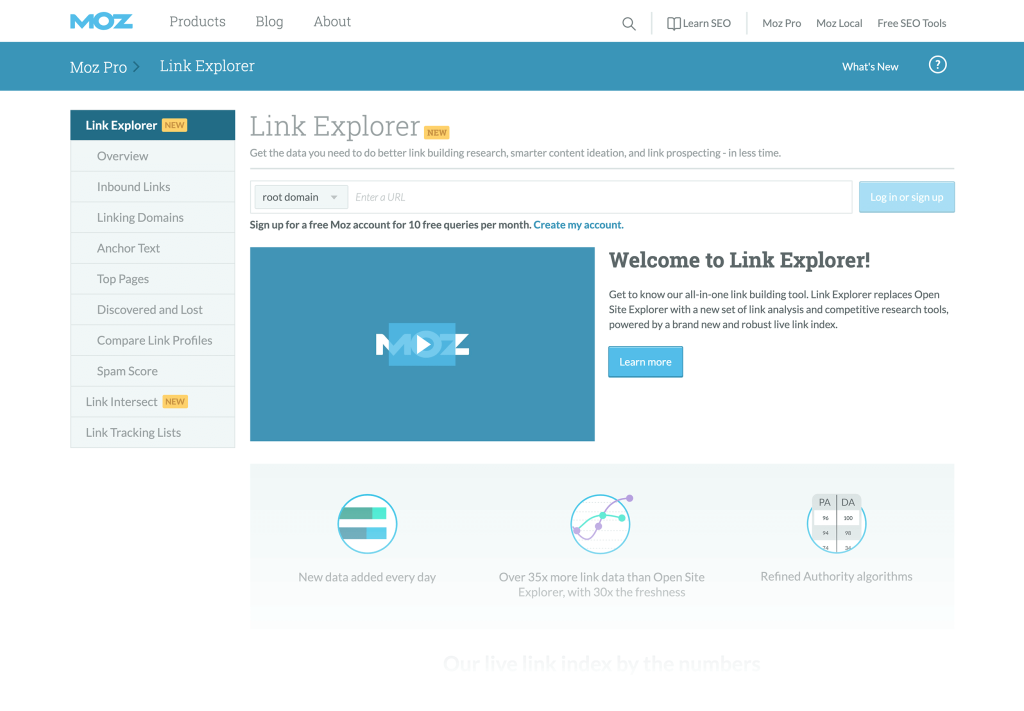
Other recommended tools include Google Search Console and SEMrush, which provide analytics on backlinks and anchor texts, among other critical SEO metrics.
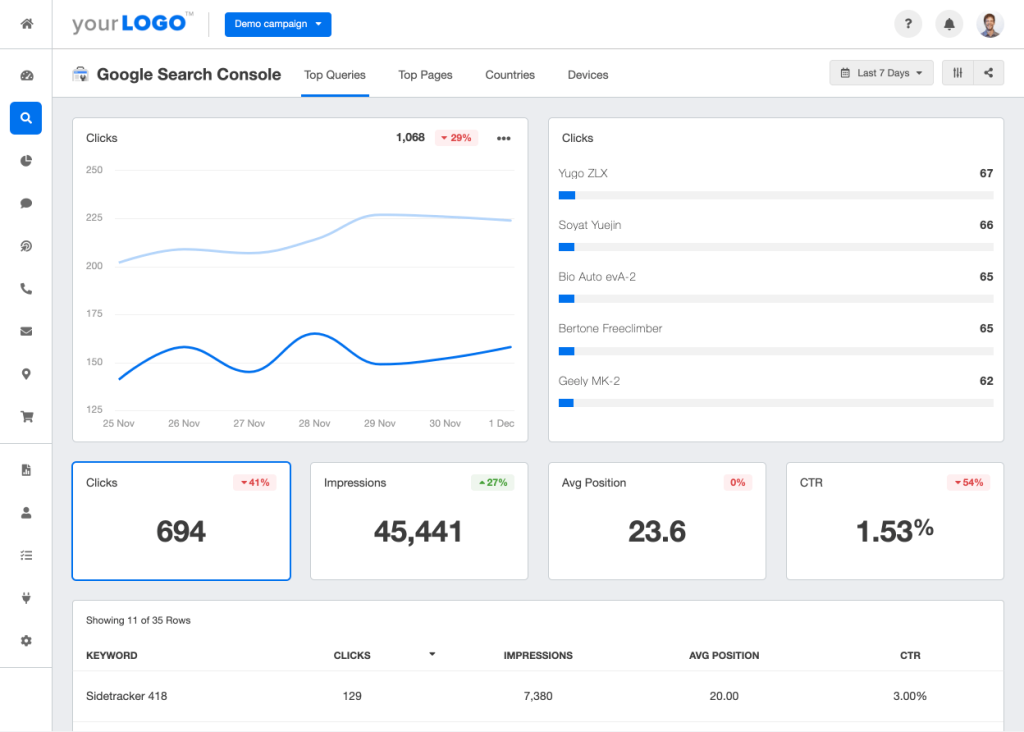
SEMrush’s Anchor Text Analysis feature offers visual charts of all indexed anchor texts from your site’s backlink profile. The tool breaks down all anchor types used in external links while also indicating the number of referring root domains that use each type.
Furthermore, SEMrush’s Lost Link Analysis feature helps identify any lost backlinks along with their respective corresponding anchor texts. This knowledge informs you on which links need to be salvaged or replaced to balance your linking profile effectively.
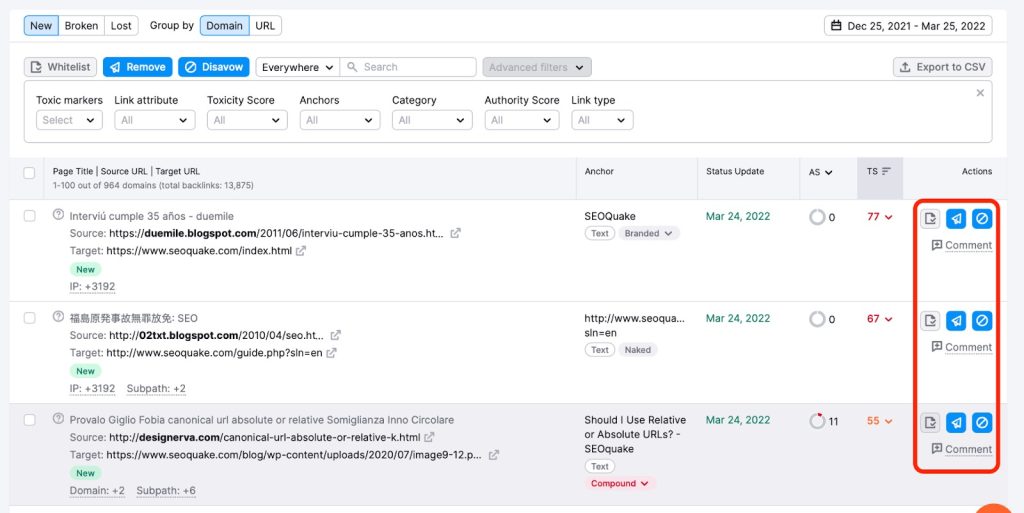
Think of using SEO tools like having a pair of binoculars with which you can pinpoint critical details about your site’s performance and discover hidden opportunities for optimization. With these tools, you can optimize your linking profile by identifying what works best for your website requirements.
Implementing Anchor Text Best Practices in Content Strategies
Now that we understand the importance of anchor text for SEO, let’s discuss how we can implement best practices in our content strategies to improve our rankings and drive more traffic to our site.
- Firstly, when creating internal links within your website, it’s important to use descriptive and relevant anchor text. This helps both search engines and users understand what the linked-to page is about. For example, if you’re linking to a page about dog food, a good anchor text would be “best dog food brands” instead of using generic text like “click here”. By using relevant keywords in your anchor text, you signal to Google the content of the linked page.
- Let’s say you run an online pet supply store. You have a blog post about different types of dog collars and you want to internally link it to your page selling these products. Instead of using vague anchor text like “click here”, you can use something more descriptive like “Shop our selection of durable dog collars”. This not only signals to Google the content on the linked page but also encourages users to click through.
- Secondly, avoid over-optimizing your anchor text by using too many exact-match keywords. While it’s important to use relevant keywords in your anchor text, Google can interpret this as spammy behavior and it may negatively impact your rankings. Instead, aim for balanced keyword usage and relevancy.
- A study conducted by Moz found that having diverse anchor text with variations of relevant keywords resulted in higher search engine rankings compared to having one specific keyword as the sole anchor text for all backlinks.
- Thirdly, ensure that your external links are from high-quality sources with relevant contextual information. When other reputable websites link back to your site with optimized anchor text, it signals to Google that other people view your content as valuable and trustworthy.
- However, some SEO experts argue that the authority of the linking site is more important than the anchor text used. While this may be true to an extent, incorporating relevant keywords in your anchor text still signals to Google the content of the linked page.
- Finally, when creating anchor text for image links, use descriptive alt text that accurately describes the content of the linked page. This not only helps with SEO but also ensures accessibility for visually impaired users.
- Think of your website as a library and your pages as books. Using descriptive and relevant anchor text is like giving each book a clear title and label – it helps both search engines and users easily find what they’re looking for.
By implementing these best practices, you can improve your website’s rankings on Google and drive more traffic to your pages. On-Page.ai’s On-Page Scans can help identify areas where you need to optimize your internal linking structure and ensure that your anchor text usage is balanced and relevant.
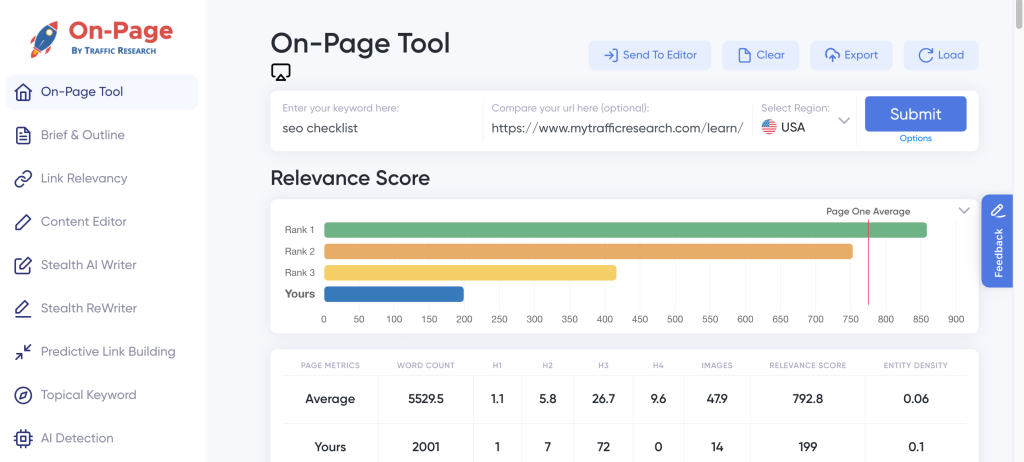
I highly recommend using On-Page.ai for optimizing your website‘s anchor text. With their advanced AI-powered tool, you can get accurate recommendations for optimizing your on-page content and improve your rankings on search engines. Don’t settle for less, choose and register with On-Page.ai for all your SEO needs.
Answers to Common Questions
Can over-optimizing anchor text hurt SEO?
Yes, over-optimizing anchor text can absolutely hurt your SEO efforts. While it’s important to use relevant keywords within your anchor text, going overboard with exact match keywords will flag your site as spammy and may result in penalties from search engines like Google.
According to a study by Moz, anchor text optimization is the third most influential ranking factor for search engines. However, the same study found that over-optimization of anchor text was one of the top factors associated with websites penalized by Google.
To avoid getting penalized for over-optimizing your anchor text, focus on using a diverse range of relevant keywords and phrases. Instead of repeatedly using the same exact match keyword, mix up your anchor text with variations and synonyms.
In short, while optimizing anchor text is important for SEO success, it’s crucial not to overdo it. Keep your focus on providing high-quality content and using natural language in your anchor text, and your SEO efforts will likely see positive results.
What are the best practices for optimizing anchor text?
Optimizing anchor text is critical for better SEO results. Here are some best practices to follow:
1. Use descriptive anchor text: Use anchor text that accurately describes the page it links to. Descriptive anchor text gives search engines an idea of what the linked page is about, and helps users understand where they will be directed.
2. Avoid generic phrases: Using generic phrases like “click here” or “read more” as anchor text can harm your SEO efforts. Such phrases provide no context to search engines and don’t give users any indication of where the link goes.
3. Place anchor text naturally: Anchor text should be placed in a natural, flowing manner within the content. Don’t force keywords into anchor text just for the sake of SEO as this will likely lead to penalties.
4. Diversify anchor text: Avoid overusing a single keyword or phrase in your anchor text as it may appear spammy to search engines. Instead, use variations of the keyword or phrase along with related terms to build a diverse link profile.
5. Monitor your link profile: Regularly monitor your link profile to ensure that anchor text is diversified and no spammy links exist. Use tools like Ahrefs, Moz, or SEMrush to analyze your backlinks and get insights on how to improve your linking strategy.
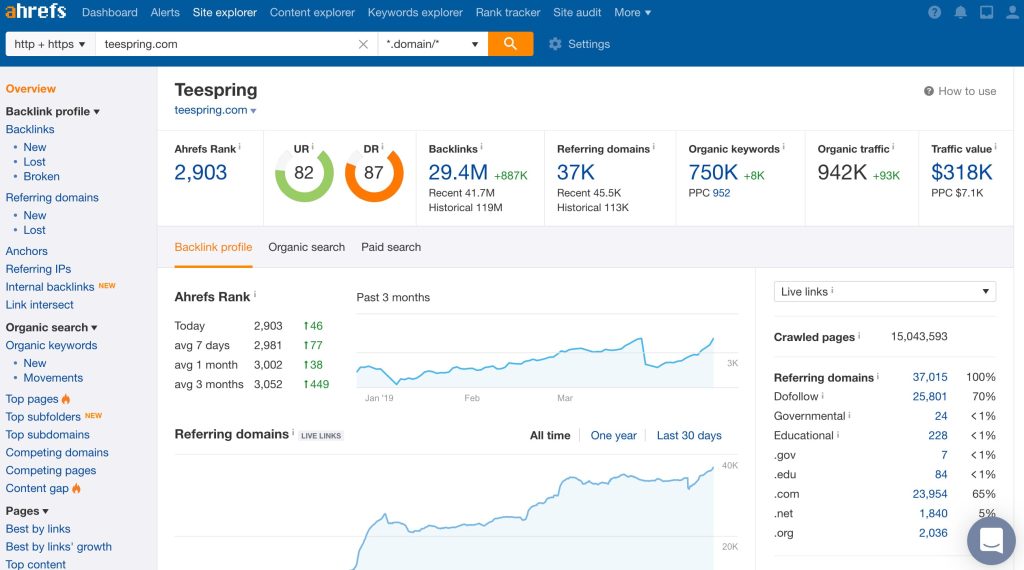
According to a study by Search Engine Journal, pages with descriptive and varied anchor text ranked higher than those with repetitive and generic anchor texts. Therefore, optimizing your anchor text is crucial for better SEO results.
What is anchor text and how does it impact SEO?
Anchor text is the visible, clickable text that appears as a hyperlink within a web page. It is an important factor in determining the relevance and authority of a website for search engines. When search engine crawlers scan through content, they look for hyperlinks to other pages and use the anchor text as a cue to understand what the linked content is about.
Anchor text can impact SEO in two ways: positively or negatively. If you have optimized anchor text, it can help improve your website’s ranking on search engine results pages (SERPs). On the other hand, poorly optimized anchor text can lead to penalization by search engines and loss of traffic.
A study conducted by Moz found that anchor text relevance is one of the top-ranking factors for Google. In fact, sites with exact match anchors had a 49% greater chance of ranking on the first page of Google compared to those without exact match anchors.
However, over-optimizing anchor text can also backfire and hurt your SEO efforts. Google’s Penguin algorithm update was specifically designed to penalize sites that used manipulative linking practices with excessively optimized anchor texts.

Therefore, it is essential to optimize anchor texts strategically while keeping user experience in mind. Use relevant keywords and natural language in contextually rich sentences that entice users to click through to another page. This will benefit both users and search engines by providing them with relevant information and increasing your site’s visibility.
In conclusion, optimizing anchor text wisely can significantly enhance your website’s SEO efforts, leading to increased traffic, higher rankings, and better online visibility.
How many keywords should be included in anchor text?
When it comes to anchor text optimization, the number of keywords you should include depends on various factors. However, in general, it’s recommended to stick to one or two keywords per anchor text. Including too many keywords can make the anchor text look spammy, which can negatively impact your SEO results.
According to a study by Moz, anchor text with fewer keywords tends to perform better in search engine results pages (SERPs) than those with more keywords. The study found that anchor texts with three or more keywords had limited value in pushing a page higher in SERPs.
Moreover, Google’s guidelines for creating links state that “the best practice is to use descriptive phrases” in anchor text instead of stuffing them with keywords. By doing so, not only will your links be more credible and relevant to both users and search engines, but they will also be less likely to trigger Google’s spam filters.
Overall, while including some relevant keywords in anchor text can boost your SEO efforts, it’s important to focus on making your links natural and useful for users rather than solely focusing on high keyword density.
How does the context of the page affect the optimization of anchor text?
The context of the page greatly affects the optimization of anchor text. In fact, studies show that excessive use of exact-match anchor text can lead to penalties from search engines. Instead, it is important to use anchor text that fits naturally within the context of the page and enhances the user’s experience.
Furthermore, search engine algorithms are becoming increasingly sophisticated in determining relevancy and context. Google’s machine learning algorithm, RankBrain, uses artificial intelligence to better understand the content on pages and identify related topics to provide more accurate search results. This means that using relevant and contextual anchor text will only become more important in the future.
In short, optimizing anchor text for better SEO results involves understanding how it fits naturally within the context of a page, providing value to readers and enhancing their experience. By doing so, not only will organic traffic increase but also user engagement metrics like bounce rate and dwell time will improve.




